Vehicle Maintenance
Full lifecycle tracking of vehicle maintenance within the fleet master platform.
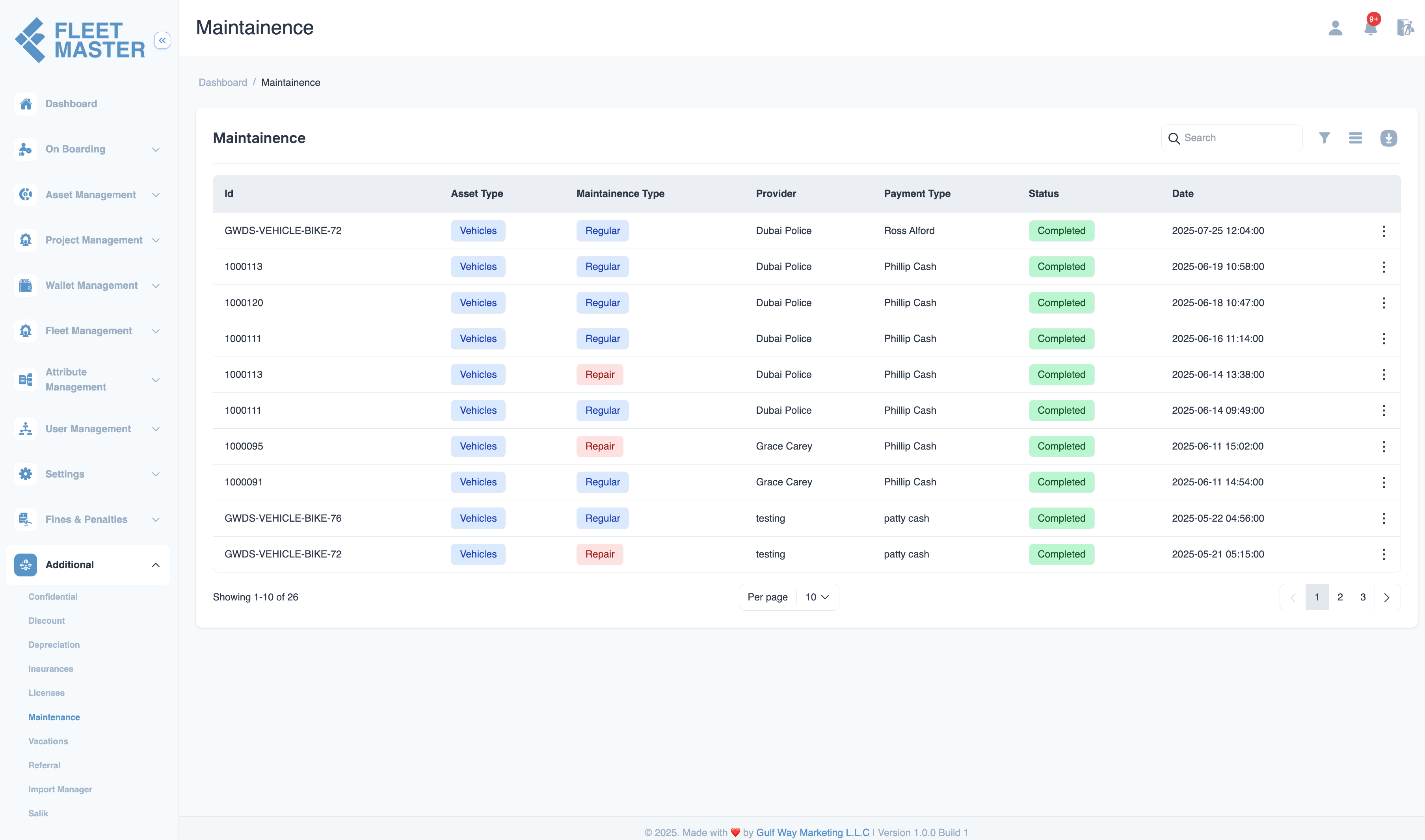
Fleet Master supports comprehensive maintenance tracking for each vehicle asset. Maintenance actions are logged, managed through distinct stages, and stored in a searchable history log for compliance and audit purposes.
Creating a Maintenance Record
To initiate maintenance for a vehicle:
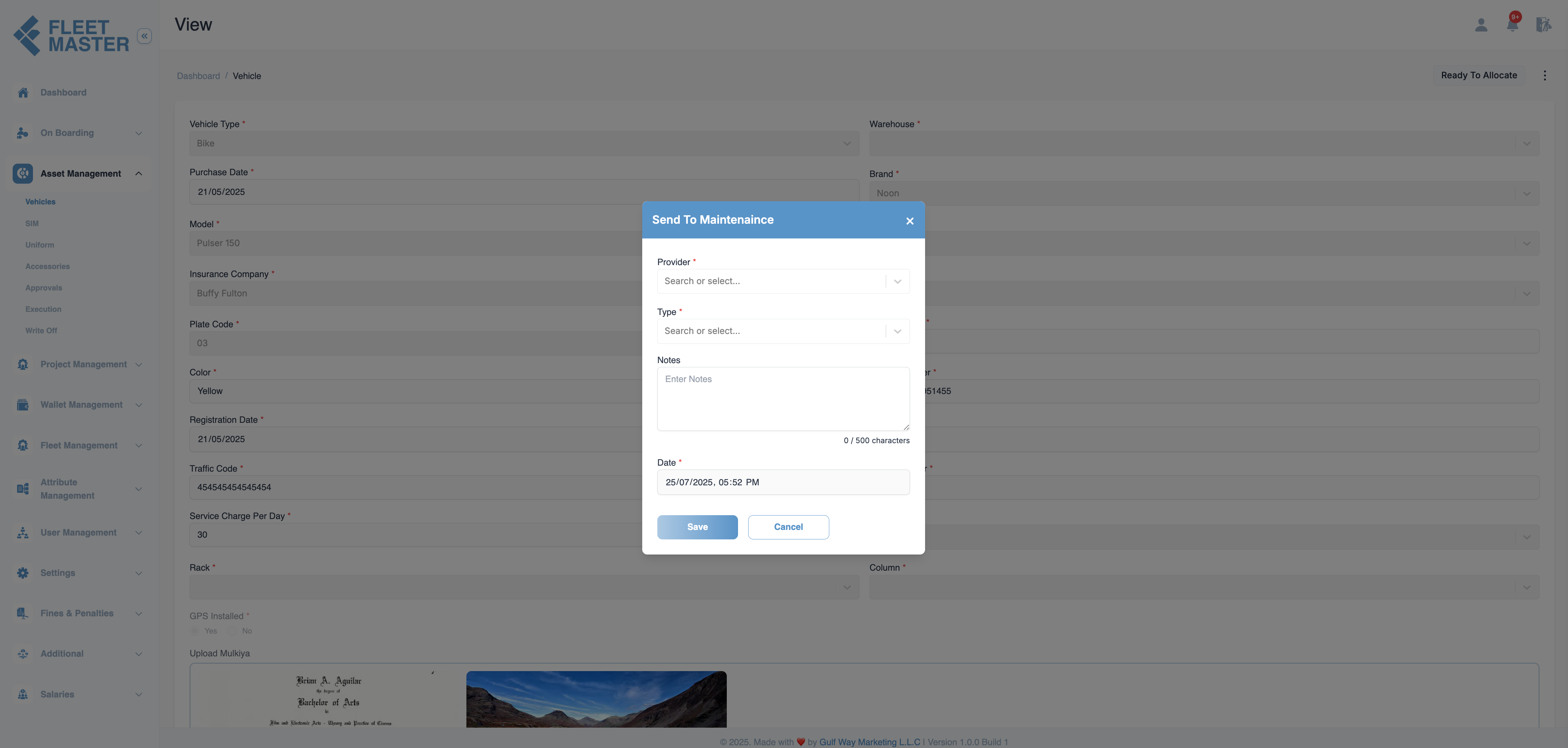
- Navigate to the Asset Management>Vehicle>view page.
- Click "Send to Maintenance".
- A form appears with the following fields:
Required Fields:
-
Type:
RegularRepairingCalibrationRebranding
-
Start Date
-
Reason or Notes
-
(Optional) Estimated Cost
Note:
Once in maintenance mode, the vehicle becomes unavailable for fleet assignment.
Lifecycle Statuses
1. Initialized
- Entry point after creating a maintenance record.
- Vehicle is now locked from allocation.
- Awaiting work initiation.
2. Repairing
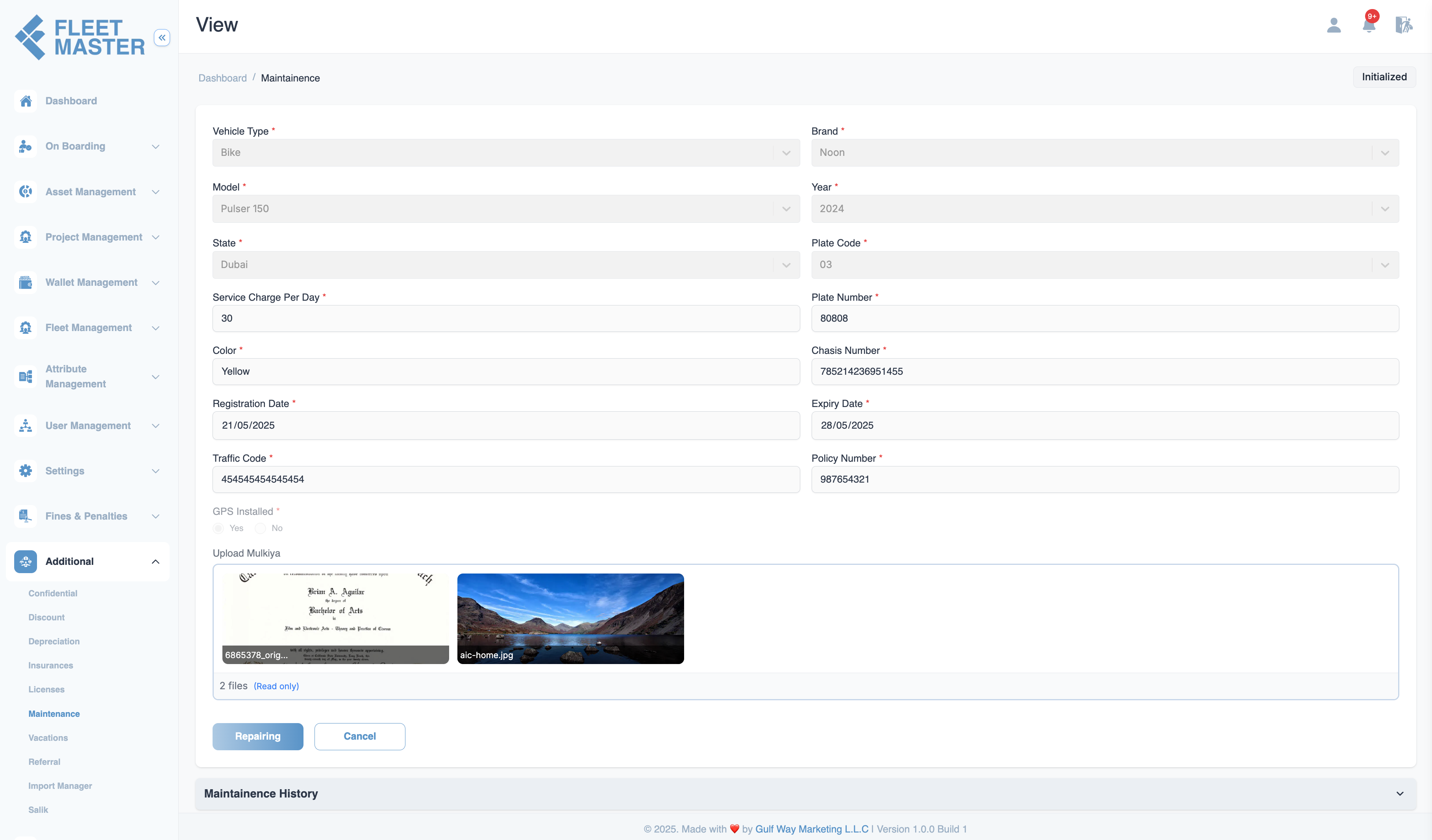
- Maintenance work has begun.
- Technicians may upload interim progress notes or files.
3. Repaired
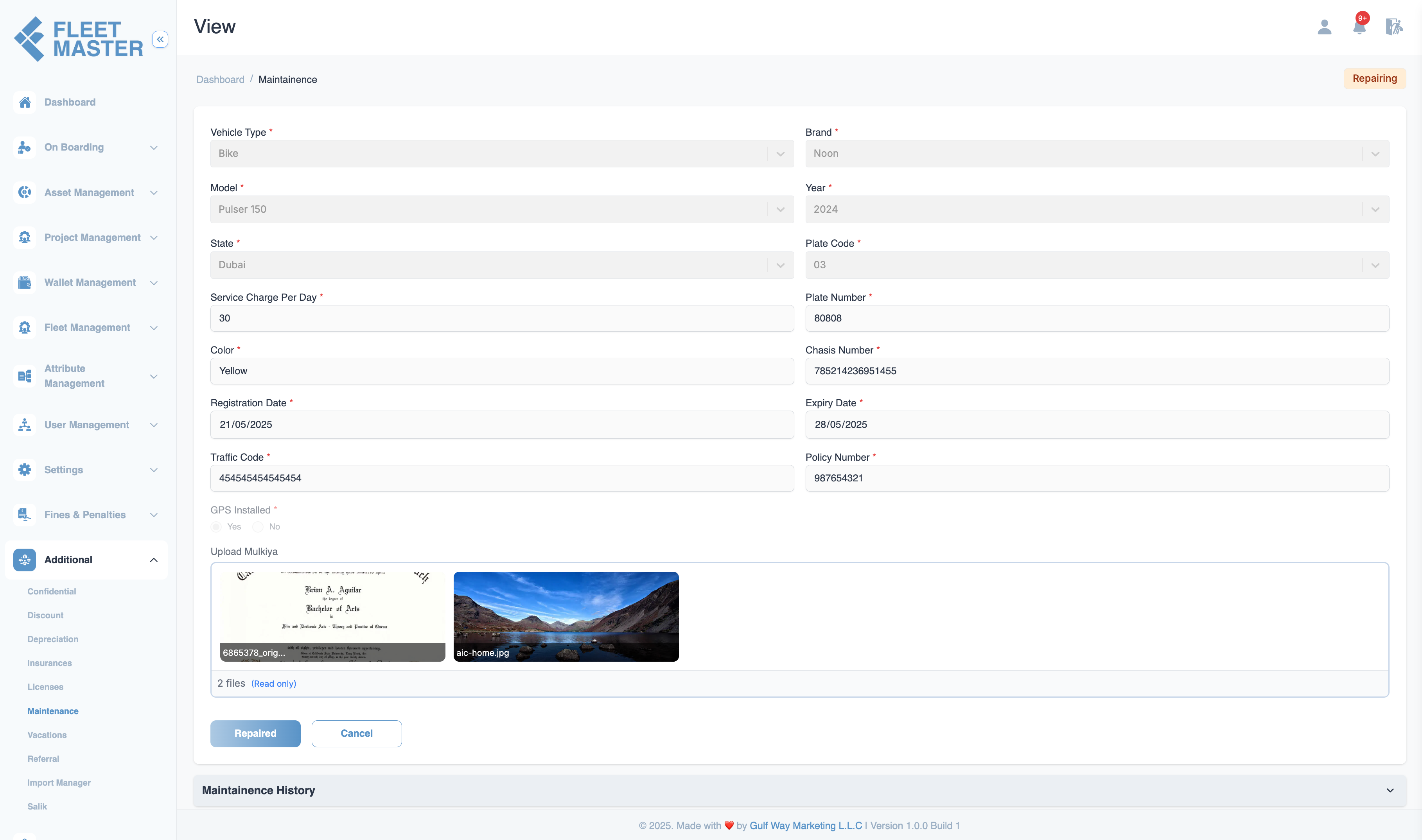 At this stage, the vehicle is functionally ready but pending validation. You must fill in:
At this stage, the vehicle is functionally ready but pending validation. You must fill in:
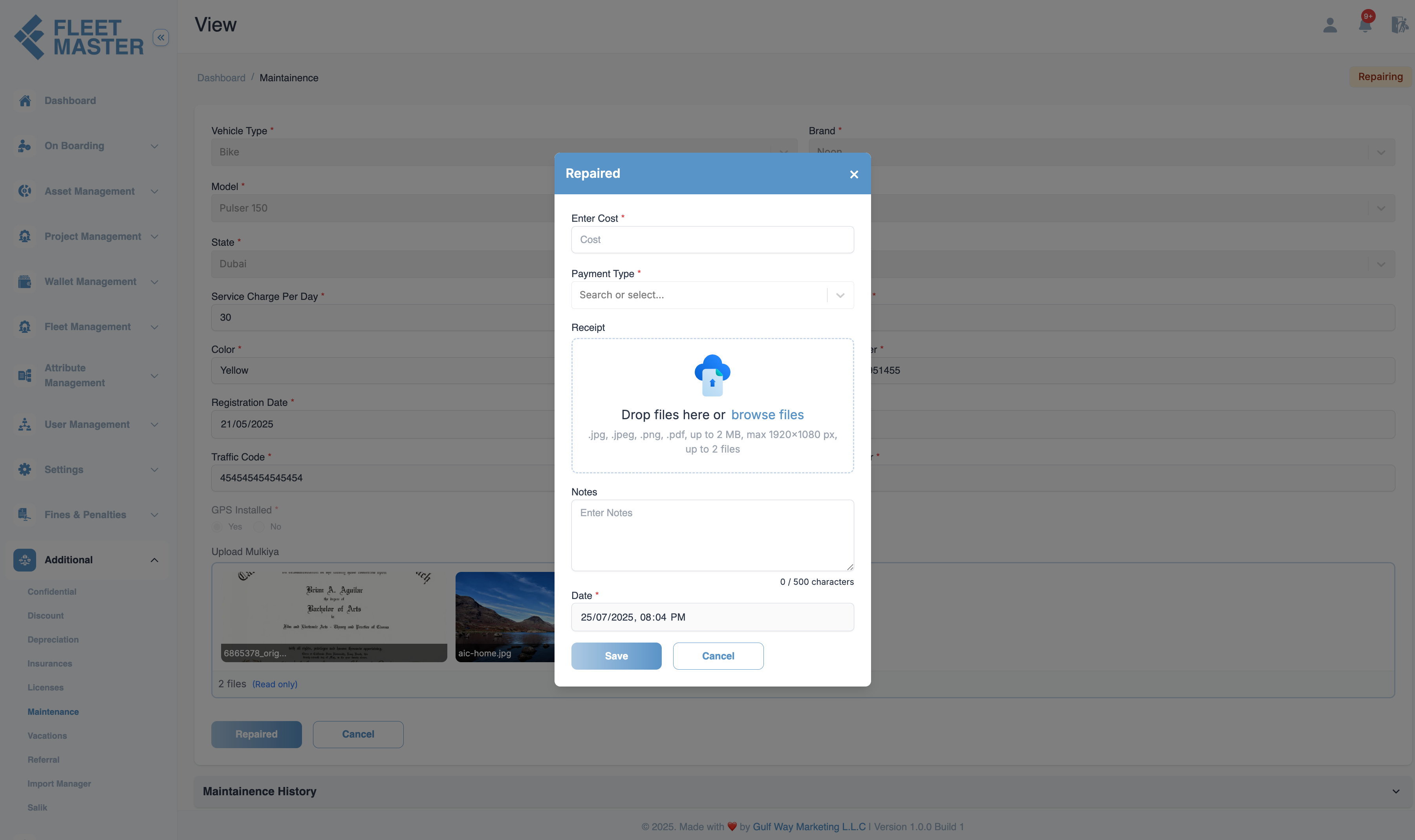
- Actual Cost
- Repair Completion Date
- Upload Receipt/Invoice
- Payment Type:
- Cash
- Bank Transfer
- Internal Voucher
4. Completed
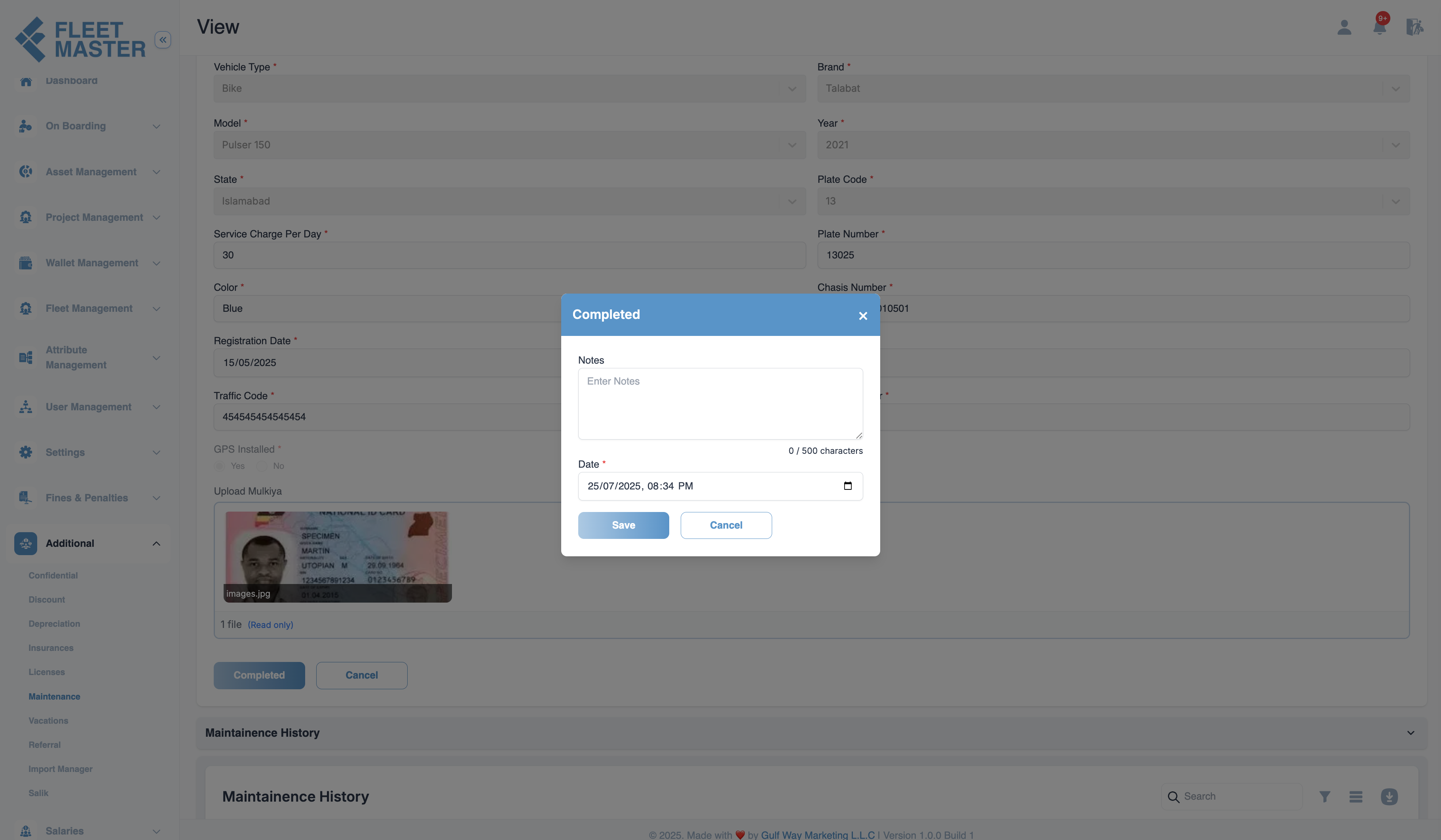
- Final confirmation step before vehicle returns to inventory.
- Add:
- Final notes
- Final completion date
- Vehicle status changes to
Waiting.
5. Waiting
- Vehicle is ready for reallocation.
- From here, asset managers can move the vehicle to:
StandbyReady to AssignTransferred- Or initiate a new workflow (e.g., write-off or rebranding)
Maintenance Types Explained
| Type | Use Case |
|---|---|
| Regular | Routine checkups, oil change, battery service |
| Repairing | Fixing damage, engine or mechanical issues |
| Calibration | Speedometer, GPS, fuel gauge recalibration |
| Rebranding | Company branding, painting, decal updates |
Additional Maintenance Records
Each vehicle can have multiple maintenance records created over time. These are listed under:
- "Additional Maintenance" tab in the vehicle profile.
- Useful for recurring issues or parallel servicing (e.g., repaint + calibration).
Cost Management
Under the Repaired phase, cost-related fields must be filled:
- Maintenance Cost
- Receipt Upload (PDF, Image)
- Date of Payment
- Payment Mode
- Optional: Reference Number
Note:
Data from this section feeds into cost analytics and budgeting reports.
Best Practices
- Use "Regular" type for scheduled servicing to reduce unexpected breakdowns.
- Always upload supporting receipts/invoices to keep records audit-compliant.
- Use maintenance history to identify frequent repair patterns across vehicles.
- Consider auto-reminders based on last completed maintenance date.
Maintenance History
Every change in a maintenance record (status, note, cost) is logged. This provides:
- Traceability across time
- Proof of expenditure
- Assurance for stakeholders
- Foundation for predictive maintenance planning
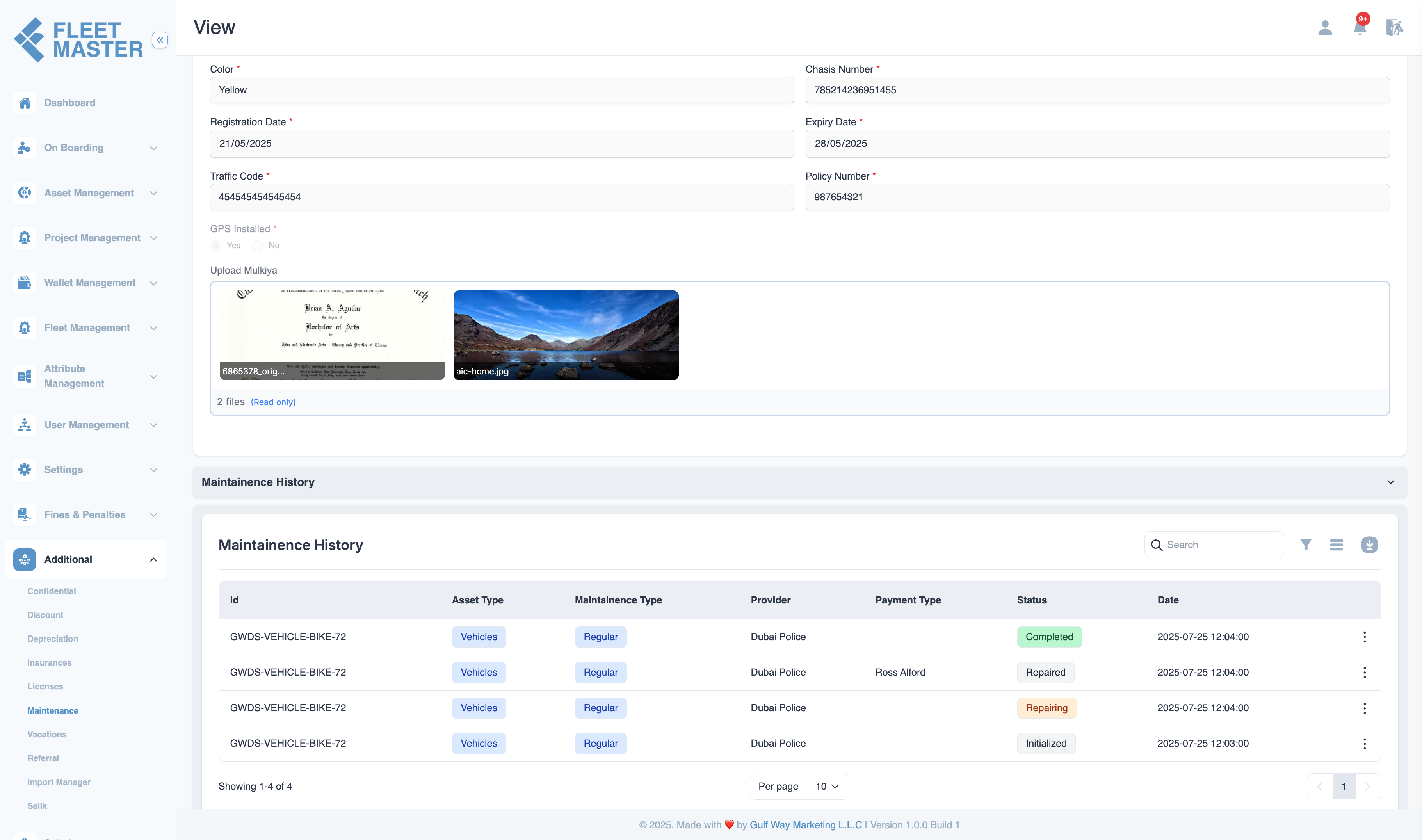
Final Notes
- Vehicle maintenance is a critical compliance workflow.
- Status transitions are linear and enforced to avoid accidental misuse.
- The vehicle is only assignable after exiting maintenance.
- Use Maintenance History to enhance reliability and data-backed planning.